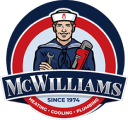Most inventions that have come down to us through the years have resulted from the need to solve a problem. We’ve all heard the saying “Necessity is the mother of invention.” The invention of the modern air conditioner is no different. Just as many other innovative minds had done before him and many others would after him, in the early 1900s, Cornell-educated engineer Willis Haviland Carrier set out to solve a problem and ended up bringing the world its first electric air conditioner. Though he didn’t call his unit by that name, his machine was clearly an early precursor to the units in operation today. Yet, this was by no means the first “HVAC” problem this innovator had solved. In fact, the early days of his career paved the way for this impressive accomplishment.
Solid HVAC Beginnings
In June 1901, the bright and motivated mechanical engineer began working at the Buffalo Forge Company, where he started his career designing heating systems. He soon designed a research program that would enable him to collect the data he needed — much of which was not readily available — to help the company create better systems that would not require the huge amounts of money previously spent to correct inadequately designed installations. Through this program, he was able to generate the data that allowed company engineers to design heaters that were consistently appropriate for spaces of any given size. His research into the amount of heat a quantity of air could hold while being blown across steam-heated pipes made it possible for engineers to arrive at more accurate estimates of the ratio of heater surface area to heating space that would be needed to heat a space effectively.
A Printer’s Dilemma
Carrier soon became head of the company’s experimental engineering department. His boss then charged him with the task of addressing a serious drop in print quality that was occurring during the summers at Brooklyn’s Sackett-Wilhelms Lithographing and Publishing Company. Willis Carrier, who has often been referred to as the “Edison” of his field and is believed by many to be the father of air conditioning, went to work in earnest to devise a solution. If past experience was any indicator, the systematic approach for which he was fast becoming known was bound to bear fruit, and he would soon have the answer.
Developing the Solution
Just a few years into the 20th century, on July 17, 1902 — only a year after he’d graduated from Cornell University with a Masters in Engineering — the brilliant young innovator had not only found the answer. He’d also developed the machine that would forever change the face of indoor cooling efforts around the world — a unit that would shape the direction of comfort system technology development for years to come.
Critical Discovery
The critical discovery that made air conditioning successful — then, as now — was the previously unrecognized fact that the printer’s problem was caused not simply by heat but much more profoundly by humidity. Variations in the moisture content of the air were causing the paper to warp and the ink colors deposited on the sheets in layers during the four-color magazine printing process to become misaligned, causing the ink to run and creating a fuzzy finished product.
Making HVAC History
The young inventor’s discovery marked a major historic breakthrough — not only for the printing industry but for air conditioning in general. Later generations would benefit greatly from the discovery, which he patented on January 2, 1906, under the unassuming and utilitarian title of “Apparatus for Treating Air” (U.S. Patent # 808897). The invention transformed industry in its early years and would soon transform personal comfort, as well.
About 13 years after making the discovery, the brilliant inventor launched his own company and later went on to install the United States Capitol’s first air conditioning system in 1928. His innovative invention has been described as “the first system to provide man-made control over temperature, humidity, ventilation and air quality,” making it an early version of today’s more-sophisticated HVAC systems.
The Progress Continues
Air conditioners have come a long way since Willis Carrier made the incredible air conditioning breakthrough that allowed him to control not just the temperature of a room but also its humidity, making it possible for him solve the Sackett-Wilhelms printing dilemma. This invention provided the firm foundation upon which more than a century of further innovation has been based — innovation that has built upon the legacy of a true visionary of the industry the additional improvements that have helped create today’s most energy-efficient HVAC solutions.
We’re Proud to Carry on the Legacy
At McWilliams & Son Heating and Air Conditioning, we honor the legacy of the HVAC giants who have gone before, and we appreciate the invaluable contributions of innovators like Willis Carrier who have helped to make the industry and its products what they are today. Thanks to their incredible dedication, hard work, and ingenious contributions to the industry, we are able to offer our customers in the Crockett, TX area a complete line of quality Carrier HVAC solutions. We also feature a comprehensive lineup of dependable heating and cooling services that provide the perfect complement to the products we offer, helping us meet your residential or commercial indoor comfort needs by keeping your new system — or your existing one — functioning at peak efficiency. Whether you need new system installation, regular routine maintenance, or top-notch repair service for your HVAC equipment, McWilliams & Son Heating and Air Conditioning will be standing by to provide just the service you need — anywhere in the Crockett, TX area.


